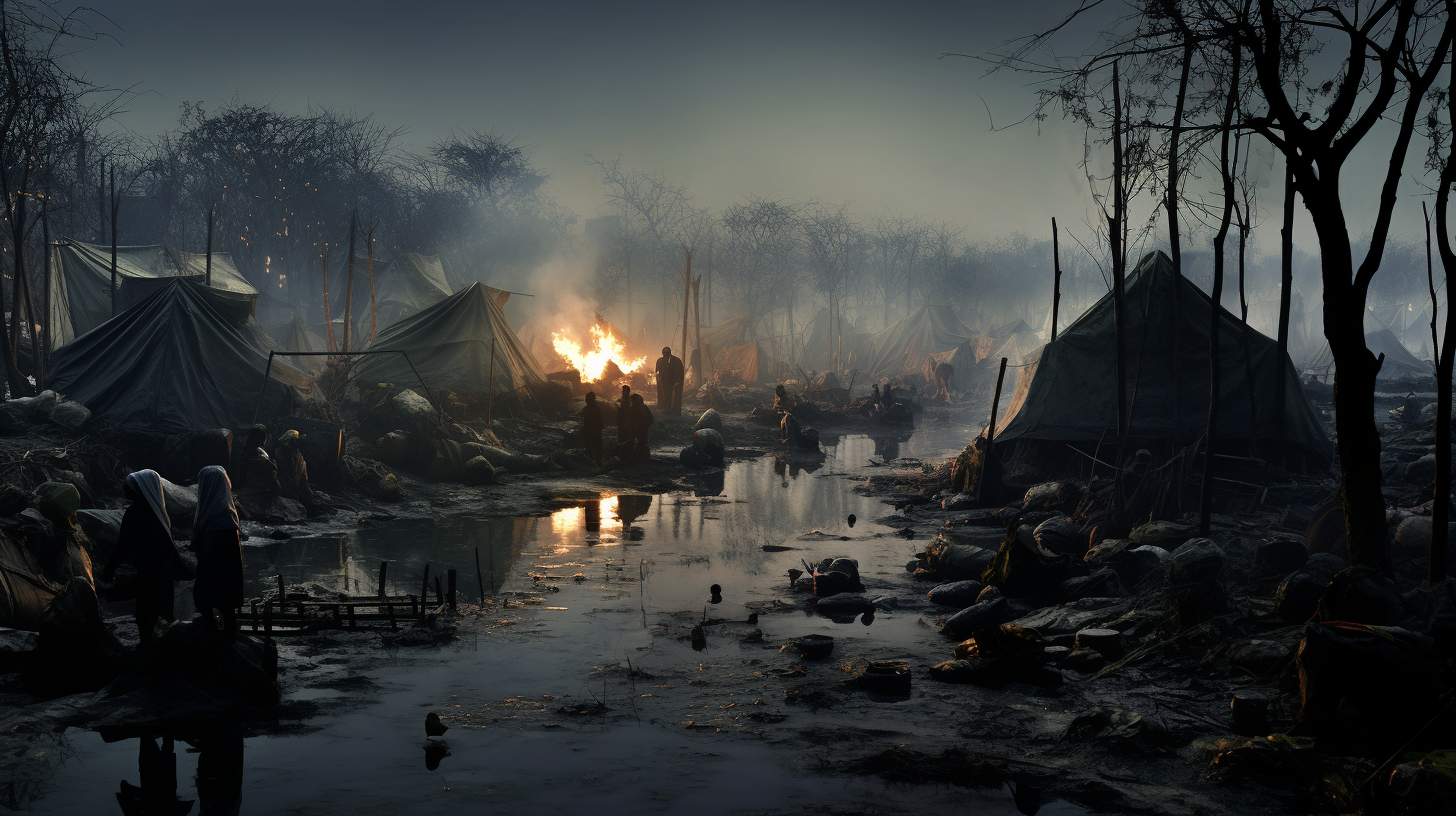In the arid desolation that once teemed with the hustle of city life, there now roams a new type of society. They trudge through the remnants of our crumbled infrastructure, the offspring of ecological collapse. They are the Neo-Nomads – the harbingers of a somber future where displacement has become the only permanence. Their emergence is a testament to humanity’s resilience and desperation in an environmentally ravaged world, a subject needing our immediate attention. Let’s delve into the reality of these burgeoning migrant societies and their arduous journey through a somber environmental dystopia.
As the climate crisis intensified, it didn’t knock politely but ravaged doors and flooded homes, scorching earth and precipitating a multitude of climate refugees. Their homes, lands, and histories submerged or scorched beyond recognition, the survivors set out searching for sanctuary – any land that would grant them refuge from the relentless climate beast.
These Neo-Nomads, unlike the wanderers of old, do not travel for trade or tradition but out of sheer necessity. Their migration isn’t seasonal but survival-driven. They traverse the wastelands in ad-hoc caravans consisting of the old-world automobiles adapted for the new-world obstacles; solar-powered, if fortunate, desperate for fuel, if not. Their convoy is punctuated with communal lore and collective memory, for they have no other archive than the stories they share.
The remarkable adaptability of these ecological migrants reveals itself in their ‘pop-up communities.’ Shipping containers turned into living units, tents latched onto the ruins of what were once high rises, and water filtration systems fashioned from scavenged parts: these are the hallmarks of their tenacity. The tenets of sustainability, born of necessity, rather than conscious environmentalism, are their guiding principles. Solar cookers and recycled water systems punctuate their settlements, a mocking echo of the green living principles once advocated in times more hopeful.
Within these migratory movements, a curious trend is observed. As traditional societal structures break down, Neo-Nomads are forging new identities. These are not bound by the geographical lines of states or the constraining labels of the past. Their identities hinge upon shared experiences and the solidarity of their predicament. They become ‘tribes’ dictated not by blood but by common struggle and mutual aid.
In the face of overwhelming desolation, one might expect despair to dominate. Yet, paradoxically, there is vivacity in these communities. There is music, albeit somber melodies played on repurposed instruments; there is art, though it’s derived from the scraps of the old world and tells tales of devastation. It’s an artistic renaissance birthed in the belly of despair, a desperate cry of creativity in the midst of ruin.
Their vitality, while inspiring, should not be misconstrued as a testament to a hopeful new beginning. It is, essentially, a response to an irreversible tragedy. The Neo-Nomads endure because there is no alternative, but their existence is no romantic nomadic fable. It is the last resort of a species backed into a corner by its own relentless consumption and environmental neglect.
Piecemeal stories of innovation and ‘green brilliance’ add shades of grey to our otherwise charcoal narrative, but they are just that—fleeting reprieves. It’s through this lens of tacit desperation that we must view the Neo-Nomads, lest we become complacent, ensnared by the mirage of adaptability overshadowing the urgency to amend our relationship with the planet.
As we survey this uncanny reincarnation of a civilization, one stark fact remains: the life of Neo-Nomads is not a chose path, but a forced foray into a world of continual escape from a peril breathing down their neck – the dire consequences of our environmental follies.
The Neo-Nomads emerge as the undeniable evidence of our times. While their tenacity is a siren of human spirit, it is equally a death knell for the world we once nursed. They navigate their fates in wastelands of our making, and through them, we’re offered a grim reflection of potential tomorrows. Their tale is one of caution, and we are the inattentive audience.
Peering into the twilight of these ecological migrant societies, we uncomfortably acknowledge the mirror they hold up to our world. Their story deserves our gaze, not as distant observers, but as potential participants in a narrative unfolding with relentless momentum.
